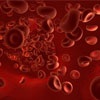1 December is World Aids Day and we decided to send one of our own at Health24 to get tested. Seeing as our intern Kyle hadn’t had the test before, he bravely volunteered.
Last year Clicks Pharmacy were giving free nationwide HIV screening tests. The service is still availabe but no longer free of charge. It is highly recommended that each and every person get tested every three months.
The experience
Waking up on the morning I had to get tested, I felt nervous, though I wasn’t sure why. I've never been promiscuous, never done drugs (not that I would start in the first place), and I'm cautious and well-informed about protecting myself from various diseases, including, well, HIV/Aids.
So, off I go to Clicks Pharmacy, sitting in the taxi reaching panic boiling point, already thinking my life is over before I've even taken the test. Typical hypochondriac, I was battling a potential nervous breakdown in an over-crowded taxi.
Eventually I got to the pharmacy and entered the nurses' office where the tests are done. The whole testing process takes about 45 minutes.
Sister Glynnis Kolzing was in charge of giving me my HIV test. She was also responsible for the mandatory pre-and-post counselling that goes with having an HIV test. She asked me a stream of questions to test my knowledge of HIV and, to my surprise, there were things about HIV/ Aids I hadn’t even heard of.
The whole counselling session calmed me down, but the trepidation and longing to get the test over and done with were still very much with me. I had my blood pressure checked, sugar levels checked and even had a TB screening test done before we got to the actual HIV test.
The test
And then it was time for the HIV test. I saw the HIV test apparatus and thought to myself: “It looks like a pregnancy test…” That tiny 8-10cm object was going to bring me either the best or worst news that this 21-year-old body could hear.
Oh, and the test is a just a finger-prick test - nothing too bloody and no long needles. I kept repeating to myself “thank god for that”.
Kolzing explained to me how the device works and how long it would take.
It takes about 10 minutes to see the results. The little pregnancy-look-a-like part of the HIV test kit has three indicator lines. Two of the lines indicate one of two HIV strands, and the other is a control line.
If a line appears on either the first or second HIV strand lines and on the control line, you have tested positive for the screening test. Note that it is just a screening test, not a 100% positive. If there are no lines on the HIV indicators and only a line on the control, then you are negative.
However the test will have to be re-taken if no line appears on the control line.
As I awaited my result of the test, I tried to calm myself down and spoke with Sister Kolzing some more about HIV, and other diseases. I have to admit I did also try to peek at my HIV test which was on the other side of the room. I couldn’t see anything and because of that I was starting to freak out. (Deep breaths, stuttering and sweating like a pig are my personal “freak out” symptoms.)
During the counselling session, Kolzing explained that even if you test positive for HIV you can have a full life by keeping fit, eating properly and taking your medication, which is not too different to what all of us should be doing anyway.
She also told me about a cocktail of drugs called post-exposure prophylaxis (PEP). This medication can help prevent the spread of HIV in a person that has contracted the disease, in the first 72 hours after their exposure to the virus.
This is one of several reasons that healthcare workers urge rape victims to go immediately to the police and to the hospital. PEP can save your life.
So back to my results
After my internal nervous breakdown “patiently” awaiting my results, the time finally came – so far it had felt like the longest ten minutes of my life.
“Congratulations, you are negative,” said Kolzing. I kid you not, Queen’s We are the Champions was playing over and over in my head after I got the news.
“It’s so nice to give people good news,” she added.
Kolzing recommends that people go for an HIV test every 6 months, just to be on the safe side.
After the test I realised quite how much I had over-reacted to everything. It really wasn’t that bad. I’d had no good reason to worry and even if that had been the case, HIV/Aids can be managed well with correct medical care and attention to a healthy lifestyle.
I would definitely urge people to go get tested: there’s a sense of relief in knowing your status, whatever it may be. Armed with knowledge, you are then in a position to take the next step in caring for your health and others’.
It is also important to remember that you must make an appointment before you go for the test, no test will be done without an appointment.
(Health 24, Kyle Boshoff, November 2010)
Read more:




 Publications
Publications
 Partners
Partners
















